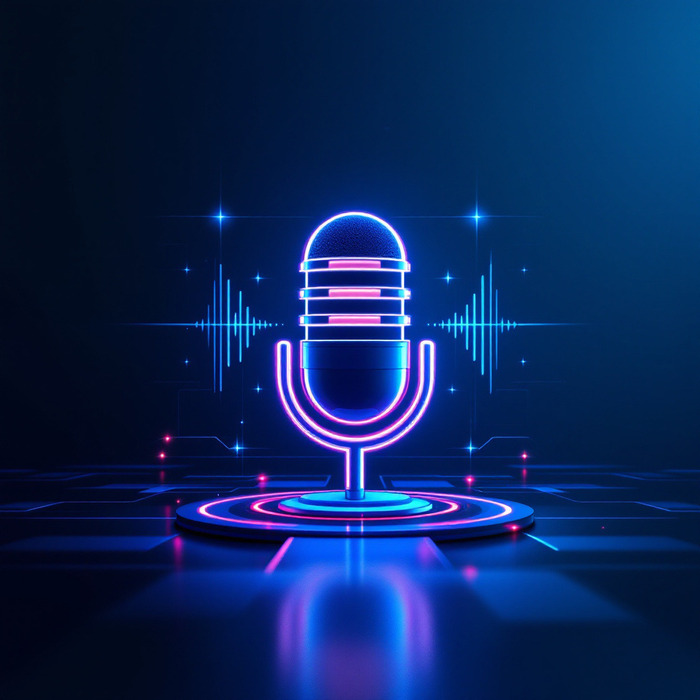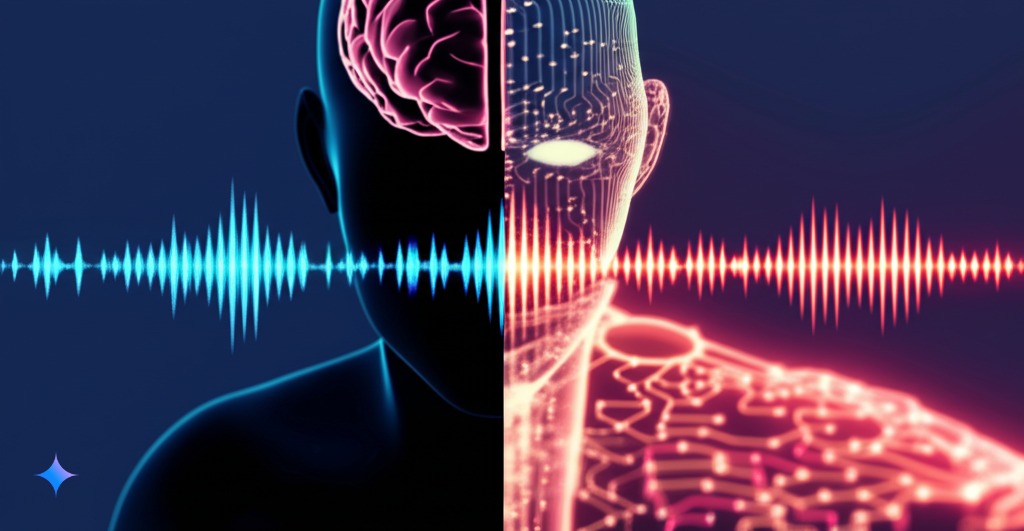
Explore the fascinating evolution of text to speech technology from its early days to today’s AI-powered neural voices. See how TTS is transforming industries and creating new opportunities for businesses and creators alike.
Introduction: Talking Computers Aren’t Sci-Fi Anymore
Remember those old movies where computers talked like robots? “Danger-Will-Robinson” kind of stuff? Well, the evolution of text to speech has come crazy far since then! Modern AI voices now sound remarkably natural, with intonation and emotion that makes them almost indistinguishable from human speakers in many cases.
Text-to-speech isn’t just some cool tech toy anymore – it’s completely changing how we interact with our devices, get information, and even how businesses talk to their customers. From helping visually impaired folks access digital content to letting busy people listen to articles while driving, this technology is making life better for millions of people every day.
The numbers are pretty mind-blowing too. The global TTS market growth is on fire right now – valued at $4.0 billion in 2024 and expected to nearly double to $7.6 billion by 2029. That’s growing almost 14% every year! This isn’t just a little trend – it’s a complete revolution in how we create and consume content.

What’s really cool is how this technology is being used. Companies aren’t just replacing human voices with robot ones – they’re using speech synthesis more like a super-smart tool that makes impossible things possible. Think about it – an online publisher can now instantly convert articles to audio in dozens of languages, or a game developer can create unique voices for hundreds of characters without hiring a single voice actor.
The best text-to-speech software for businesses is changing everything from customer service to marketing videos. About 60% of large companies are already using some form of this technology, and that number just keeps climbing. And it’s not just big corporations – small businesses and solo creators are jumping on board too, thanks to affordable cloud options.
In this article, we’ll take a fun trip through the history of speech synthesis, check out the coolest ways it’s being used today, and peek at what’s coming next. Whether you’re curious about how neural TTS improves customer experience or wondering about the future of AI-generated speech, I’ve got you covered. Let’s dive into the world of talking machines!
The First Words: When Computers Started Talking
Humble Beginnings: The 1950s and 60s
The story of speech synthesis kicks off back in the late 1950s, when computers were these massive machines that took up entire rooms. See early speech system history We’re talking about devices with less processing power than your average smart toothbrush today, yet somehow engineers were trying to make them talk!
One of the first big breakthroughs came in 1961, when two researchers named John Larry Kelly, Jr. and Louis Gerstman got an IBM 704 computer at Bell Labs to “speak.” And by speak, I mean make sounds that sorta, kinda resembled human speech if you used your imagination. But hey, it was revolutionary for its time! Discover the Bell Labs innovation
By 1968, we got our first general English text-to-speech system developed in Japan at the Electrotechnical Laboratory. The voices were super robotic and honestly pretty awful by today’s standards, but they laid the groundwork for all the AI voice technology that would follow. This was truly the start of the evolution of text to speech as we know it today. Read about the first English TTS system
Growing Pains: The 70s and 80s Get Chatty
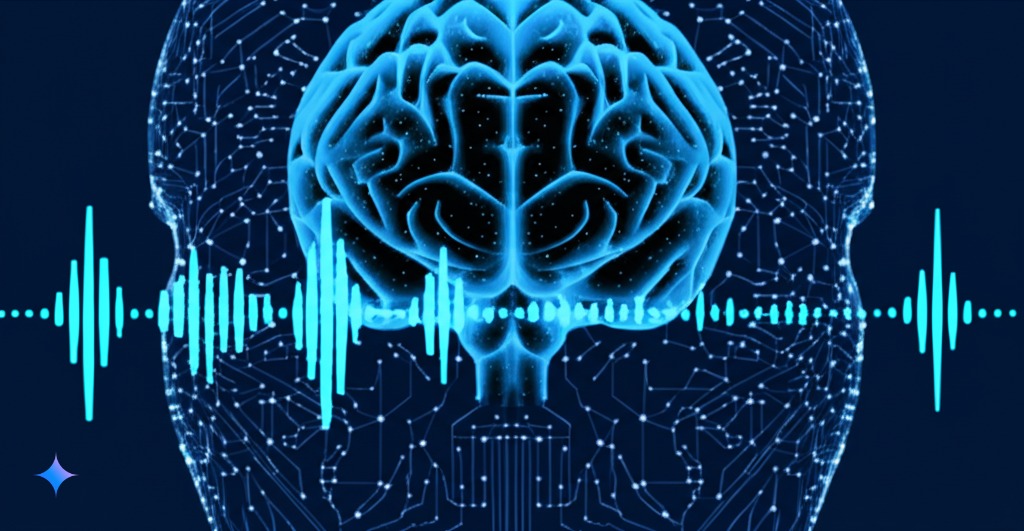
The 1970s and 80s brought some serious upgrades to speech engines that helped computer voices sound slightly less like, well, computers.
Something called Linear Predictive Coding (LPC) got developed in 1966 and became super important for the first speech synthesizer chips in the 70s. Remember those toys like Speak & Spell that were so popular back then? That was LPC technology in action! These systems used math formulas to make speech sounds – pretty basic compared to what we have now, but mind-blowing back then. Explore early speech technology
In 1975, a system called MUSA became one of the first text-to-audio systems that could read Italian text out loud. This was a big deal because it showed that speech-to-text systems could work in different languages, not just English. Find out about multilingual speech advances
The 80s saw TTS software get good enough to use in actual products people could buy. The big players were DECtalk and Bell Labs’ system. If you’ve ever heard recordings of Stephen Hawking speaking, you’ve heard DECtalk – he used that synthesizer for most of his life! It wasn’t exactly smooth and natural, but you could understand it, which was a huge step forward. Learn about iconic TTS systems
For anyone who works with voice content today, it helps to understand these early systems. The quality difference between then and now is night and day! If you’re curious about how this technology can be used for storytelling, check out AI text to speech for narration options that make older systems seem prehistoric by comparison.
Picking Up Speed: The 90s and 2000s Get Serious
The 90s and 2000s is when speech recognition technology and text-to-speech started getting actually useful instead of just scientifically interesting.
An important breakthrough came when Fumitada Itakura’s team developed an LSP-based speech synthesizer chip in 1980. This chip became super important for international speech coding standards in the 1990s. I know that sounds kinda technical and boring, but it was a huge step toward making speech technology standard across different devices and systems. Read about synthesizer chip advances
By 2001, speech recognition technology hit about 80% accuracy – still far from perfect, but good enough for basic applications. This is when we started seeing those phone systems where you could talk to a computer instead of pressing buttons… though they were often more frustrating than helpful! Check out speech recognition history
The 2000s brought Google Voice Search onto the scene, which pushed speech engines to new levels of accuracy and actually worked well enough that people wanted to use it. This tech laid the groundwork for the voice assistants we all rely on today. Discover voice search evolution
For those who want to understand how the quality of these technologies has improved, there’s a huge difference between the robotic voices of the 2000s and today’s options. Modern solutions like those covered in AI text to speech quality comparisons show just how far we’ve come.
Today’s Talking Machines: Text-to-Speech Gets Real
Market Boom: TTS Goes Mainstream

Fast forward to today, and the text-to-speech industry is absolutely booming! The market is growing around 15% every year between 2023 and 2030. That’s the kind of growth that gets investors and tech companies super excited. View current market data
The coolest development? Neural text-to-speech now dominates the market. Unlike those old robotic voices, neural TTS uses deep learning (a type of AI) to create voices that sound genuinely human. These systems analyze thousands of hours of real human speech to learn natural patterns, intonation, and emotion. This is why Alexa, Siri, and Google Assistant sound way more natural than voice assistants from even 5 years ago. Explore neural TTS technology
Another major trend is the shift to cloud-based TTS solutions. These dominated the market in 2023 and are still growing like crazy. Cloud-based services mean you don’t need expensive hardware or technical expertise to access amazing voice technology. A small business or solo creator can now use the same quality voice tech as a huge corporation, all through simple online services. Read about cloud TTS advantages
This mainstream adoption has made it super accessible for anyone to experiment with AI text to speech online services that offer incredible quality without breaking the bank.
Big Tech Makes Big Moves
The tech giants are all racing to push AI-driven speech forward. In 2023, Microsoft dropped a bombshell with VALL-E, a crazy-advanced language model that can copy anyone’s voice after listening to just three seconds of audio. Yes, three seconds! That’s both amazing and a little scary when you think about it. Learn how Microsoft VALL-E is changing TTS technology
We’re also seeing some cool partnerships forming. In 2023, the language-learning app Duolingo teamed up with Microsoft to create custom voices for their platform. This Duolingo text-to-speech collaboration is making learning more engaging and effective for millions of users. Read about education partnerships
North America currently leads the global TTS market growth, mainly because companies there are quick to adopt AI and machine learning in speech technologies. But other regions are catching up fast as the technology becomes more accessible worldwide. Check out regional market insights
For content creators, these advances have opened up amazing opportunities to use AI voice over for YouTube videos and other media, making professional-quality production accessible to everyone.
Real-World Applications That Matter
Today’s text-to-speech tech isn’t just impressing tech nerds – it’s actually changing lives and transforming industries.
In education, TTS is making learning way more accessible for students with reading difficulties or visual impairments. It’s also helping language learners hear proper pronunciation of words they’re studying. For students looking to get more out of their educational tools, best speech to text AI for students resources have become incredibly valuable.
The business world has embraced voice assistants and text-to-speech for customer service in a big way. From phone systems that actually understand you to voice-enabled chatbots, the customer experience is becoming more conversational and human-like. The impact of cloud-based text-to-speech for customer service can’t be overstated – it’s saving companies money while often improving customer satisfaction. Explore business applications
Content creators are probably the most visible users of this technology. They’re using real-time voice generation to produce audiobooks, podcasts, and video content without expensive recording equipment or voice actors. This has democratized voice content creation, allowing more diverse voices and stories to reach audiences. For podcast creators specifically, learning how to use AI text to speech for podcast production has been a game-changer.
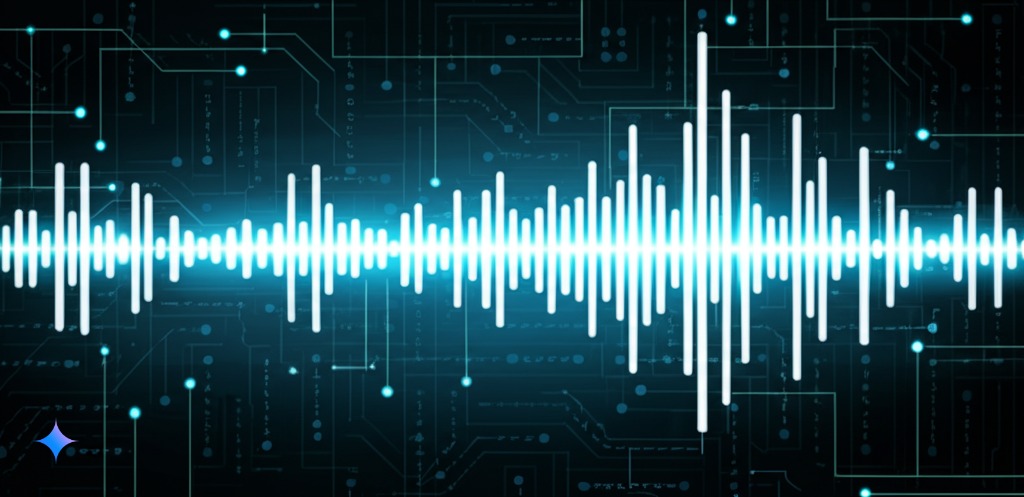
The accessibility impact is huge too. Speech synthesis for accessibility in education and other fields has opened up digital content to millions of people who previously couldn’t access it independently. The text-to-speech market trends and forecasts show this area growing particularly fast as organizations work to make their content available to everyone. Learn about accessibility impacts
Tomorrow’s Voices: The Future of Text-to-Speech
Show Me The Money: Market Predictions
The future of text-to-speech looks incredibly bright (and profitable). The TTS market is expected to hit $10 billion by 2030, growing at 15.7% each year. That’s the kind of growth that attracts serious investment and innovation. See future market projections
This growth is being fueled by more and more industries finding uses for the technology – healthcare, education, entertainment, customer service, and many more. As the technology gets cheaper and better, we’ll see it used in increasingly creative ways.
If you’re interested in the business side of all this, looking at various AI text to speech solutions shows just how much investment is flowing into this space from both established tech giants and innovative startups.
AI’s Growing Voice in Speech Technology
The continued evolution of text to speech is being driven mainly by advances in artificial intelligence. Deep learning algorithms now allow speech engines to generate incredibly human-like speech patterns, creating more natural and intuitive interactions. Read about AI speech advancements
One of the most exciting developments is in multilingual TTS and translation. Recent advances in natural language processing have opened up new possibilities for global communication. Imagine a future where language barriers practically disappear because AI can instantly translate and speak any language with native-like pronunciation. That’s not science fiction – it’s already starting to happen. Explore multilingual voice technology
Voice cloning is also advancing super fast, allowing for highly personalized custom voice generation. This has huge implications for branding, accessibility, and entertainment. Gaming companies are using this for AI text to speech for video games, creating more immersive experiences where every character can have a unique voice.
For those curious about trying voice cloning, there are even free AI voice cloning options to experiment with, though the quality varies widely compared to premium services.
Next Frontiers: What’s Coming Soon
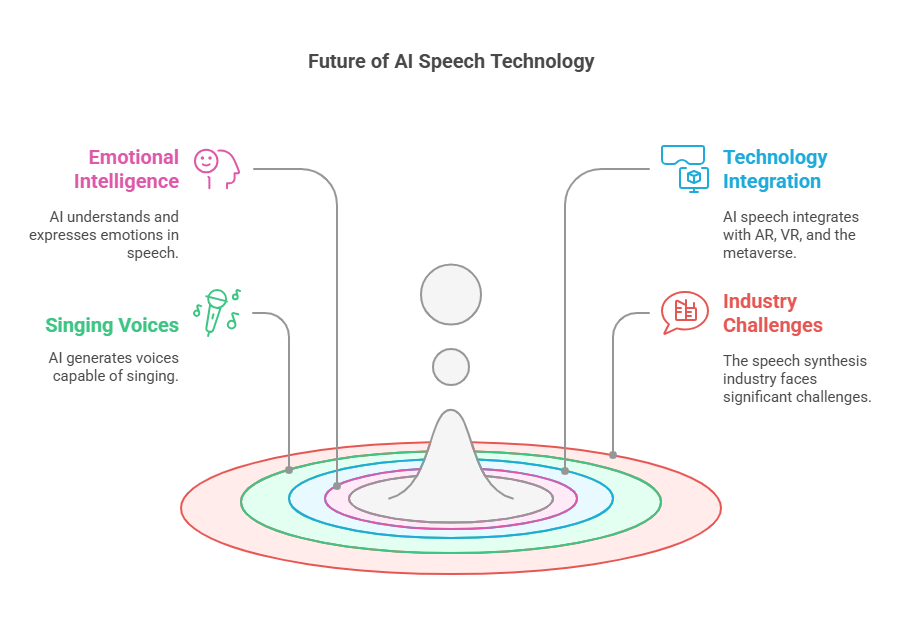
The next big thing in AI-generated speech will likely focus on emotional intelligence and contextual awareness. Future systems will understand the emotional context of text better and adjust their speaking style accordingly – sounding excited about good news or sympathetic about problems.
The future of AI-generated speech will also likely include more integration with other technologies like augmented reality, virtual reality, and the metaverse. Imagine virtual characters with unique voices generated in real-time based on their appearance and personality. Or AI assistants that adjust their tone based on your mood and the situation.
We’re also seeing the machine learning impact on speech synthesis create voices that can sing, not just speak – opening up new possibilities for entertainment and creative applications. The challenges in the text-to-speech industry here are significant, but the progress is impressive.
The Flip Side: Challenges in the Voice Revolution
Privacy Worries in a Voice-First World
As text-to-speech becomes more widespread, data privacy has become a major concern. Over 60% of TTS providers face challenges related to user data protection. When systems can copy your voice from just a few seconds of audio, questions about consent and data security become super important.
Voice data is highly personal and identifiable. As TTS systems collect and analyze more voice samples, ensuring this data is protected becomes increasingly critical. Learn about voice data security
The Deepfake Problem
The rise of deepfake technology presents maybe the biggest ethical challenge for real-time speech synthesis. When AI can perfectly mimic anyone’s voice, how do we know what’s real anymore?
These ethical issues in AI voice cloning aren’t just theoretical – voice deepfakes have already been used for scams, misinformation, and impersonation. This technology raises serious questions about authenticity and verification in our increasingly digital world. Explore ethical considerations
To address these concerns, the industry is working on detection technologies and ethical guidelines. Some companies are implementing “voice watermarks” that can identify AI-generated audio. Others are developing strict consent protocols for custom voice generation.
Quality vs. Accessibility Trade-offs
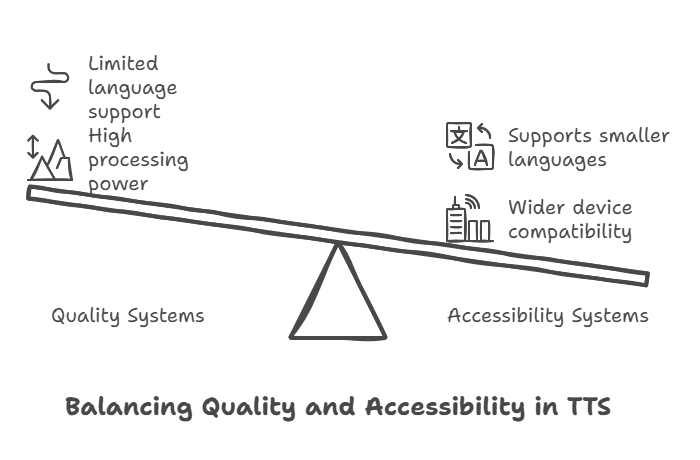
While neural text-to-speech has made incredible advances, there’s still often a trade-off between quality and accessibility. The highest quality systems typically require more processing power and may not work on all devices or in all languages.
This creates potential disparities in who can benefit from the technology. Making high-quality TTS software widely available, especially for smaller languages and communities with fewer resources, remains a challenge. Read about technological challenges
For professionals comparing options, resources on TTS vs human voices can help make informed decisions about when to use each approach.
Wrapping It Up: Evolution of Text to Speech; The Voice Revolution Continues
The evolution of text to speech is seriously one of the coolest tech journeys we’ve seen in our lifetime. Think about it – we went from those clunky robot voices that could barely say “hello” back in the 50s to today’s AI-driven speech that sounds so natural it can give you goosebumps. That’s a pretty wild ride in just a few decades!
This isn’t just about making computers talk for fun – it’s changing lives in real ways. Blind people can now access pretty much any digital content. Kids with reading difficulties can hear their textbooks read aloud. Busy people can listen to articles while driving. And businesses can create voice content in minutes instead of days. No wonder the market’s racing toward $7.6 billion by 2029!
Sure, we’ve got some speed bumps ahead. The whole privacy thing is tricky – nobody wants their voice stolen and misused. And we need to make sure these awesome tools are available to everyone, not just folks with the fanciest devices or who speak majority languages. But honestly, the upsides are just too massive to ignore.
Whether you’re a tech geek who loves playing with speech engines, a business owner looking to jazz up your customer service, or just somebody who appreciates when your GPS actually pronounces street names right, voice tech is going to be an even bigger part of your life going forward.
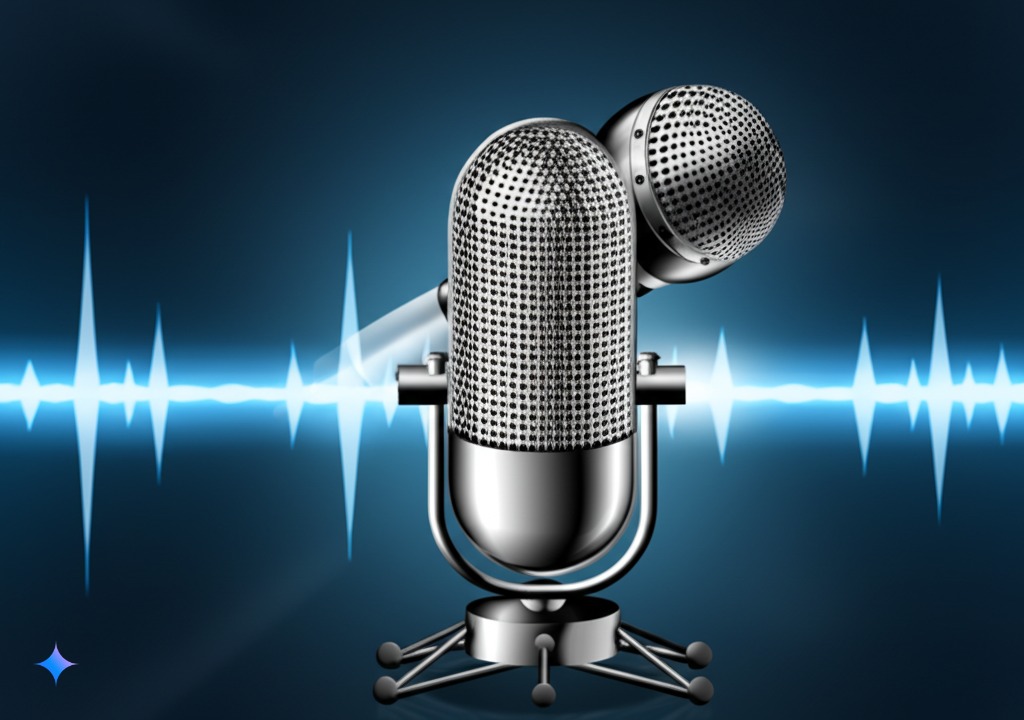
The voice revolution? It’s just warming up! What we’re hearing today is just the beginning of what’s possible. I don’t know about you, but I can’t wait to see (or should I say hear?) what comes next!
Faqs about Evolution of Text to Speech
What is VALL-E and why is it significant?
VALL-E is this mind-blowing thing Microsoft came up with in 2023 that can copy someone’s voice after hearing them talk for just 3 seconds. Not minutes – seconds! It’s a huge deal in voice cloning technology because older systems needed way more sample data and still sounded pretty fake. VALL-E sounds remarkably natural while working with barely any input. Pretty crazy when you think about it!
Which segments are leading the text-to-speech market?
Right now, neural and cloud-based options are absolutely crushing it in the TTS market growth race. Neural text-to-speech gives you those super natural-sounding voices that don’t sound like robots anymore, while cloud-based solutions mean you don’t need some fancy high-powered computer to use them. You can get amazing quality right from your browser or phone!
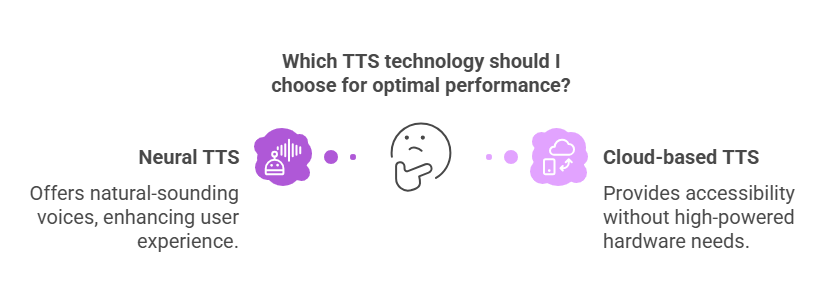
What are the main challenges facing the text-to-speech industry?
There are three big problems the industry is wrestling with right now. First, the privacy stuff – who owns your voice data when an AI learns from it? Second is the whole deepfake nightmare – imagine getting a phone call from “your mom” asking for your bank details, but it’s actually a scammer using a copied voice. Yikes! And third is making sure this tech works for everyone – not just English speakers with fancy phones. These aren’t easy problems to solve, and companies are scrambling to figure them out before regulators step in.

How much will the text-to-speech market grow by 2030?
Hold onto your hats – experts are saying the global text-to-speech market will explode to around $10 billion by 2030! It’s growing almost 16% year after year. With that kind of money involved, you better believe everyone from tiny startups to tech giants are pouring resources into voice tech. Things are already moving super fast, but this is just the beginning!
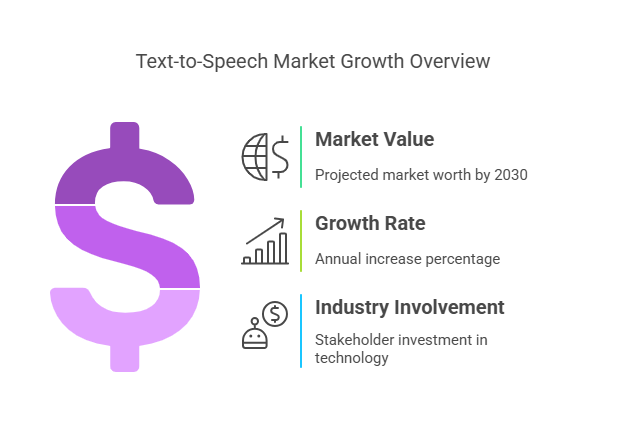
.
How is AI improving text-to-speech technology?
AI is basically the secret sauce that made text-to-speech stop sounding like robots! Those neural networks and deep learning systems can study thousands of hours of human speech to figure out all the tiny details that make us sound human – little pauses, emotion in our voice, how we emphasize certain words, and all those natural speech patterns we don’t even think about. The result? Voices that often sound so real you can’t tell they came from a computer.
What industries benefit most from text-to-speech technology?
So many! Education is huge (especially for accessibility), entertainment is going crazy with it (audiobooks, games, videos), customer service loves it for those automated systems that don’t drive you nuts anymore, healthcare uses it for everything from reminders to reading medical info, and pretty much any industry where people need information while their eyes or hands are busy. Drivers, factory workers, people with disabilities – the list goes on and on.
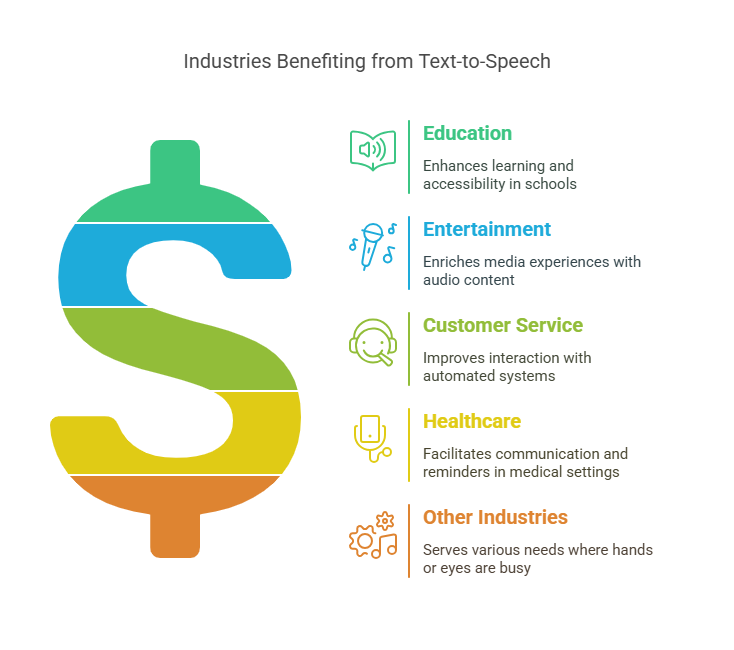
Can text-to-speech completely replace human voice actors?
Not entirely – at least not yet! While AI-generated speech has gotten amazingly good, human voice actors still bring something special to the table. They can interpret scripts in unique ways, bring subtle emotional nuances that AI might miss, and make creative choices that surprise and delight. That said, for lots of everyday stuff like reading articles, giving directions, or basic narration, today’s TTS is totally adequate and way cheaper and faster than hiring voice talent.
How can I get started with text-to-speech for my own projects?
It’s super easy these days! If you’re just testing the waters, check out free text to voice online tools that let you try different voices without spending a dime. When you’re ready to get more serious, the big players like Amazon (Polly), Google, and Microsoft all offer amazing cloud services with voices that sound incredible. You don’t need any technical skills to get started – most have simple interfaces anyone can use!

